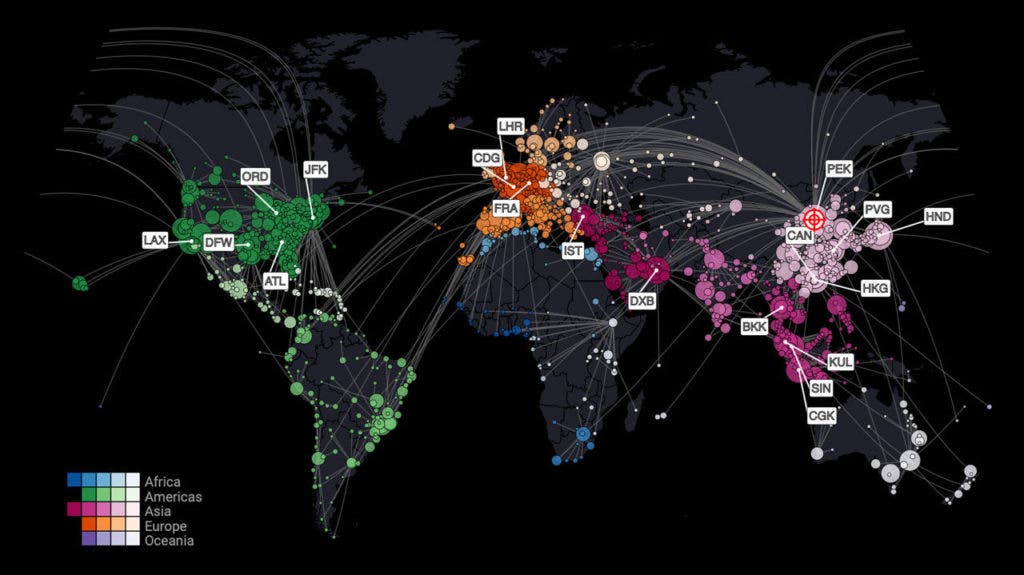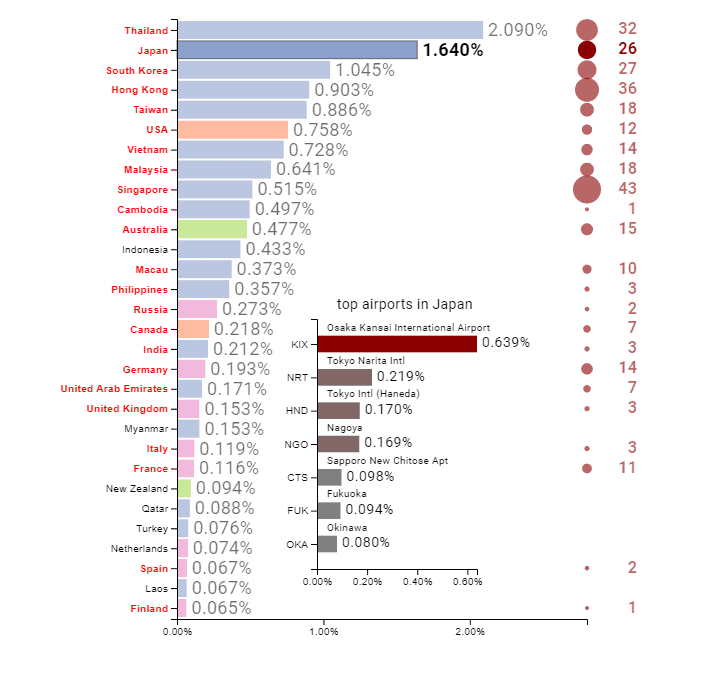We already have an interactive map showing where coronavirus cases are happening — now, a new model tries to predict where the virus might strike next.

There are currently over 40,000 confirmed coronavirus cases worldwide, with over 1,000 fatalities. The outbreak is increasingly looking like a pandemic and health officials are concerned that the disease might start to spread globally. Currently, around 99% of all cases have been reported in China and there is no indication that the virus is reproducing in other countries — but if this does happen, the results could be disastrous.
With this in mind, a team of researchers from the Humboldt University of Berlin and the Robert Koch Institute devised a model to predict relative risk for coronavirus spread (the computational model is presented in detail here). Aside from confirmed cases, the model is based on international air transport trends, including 4000 airports with more than 50000 flight routes.
The spread of the virus on an international scale is dominated by air travel — in China, the virus had spread to several provinces before Wuhan (the city where the outbreak originated) was quarantined. This is why air traffic is so significant here.
Asian countries are most at risk, though the US and Australia also are also at significant risk. Beyond China, Thailand is the most likely to have infected people arrive at its airports.

After Thailand, Japan is the most at-risk country — but interestingly, Osaka’s international airport is more at risk than Tokyo’s airport, due to the travel patterns from infected areas — the interactive chart shows individual risks when you click a country.
However, it’s important to note that by far, most cases have occurred in China — as researchers also illustrate.

How should we deal with this model?
Bear in mind that this is not an absolute prediction or a tool that should be used to make quantitative assessments — it shows relative risks more than anything else.
This is particularly useful to enable health workers to gain an intuitive understanding of where the virus might be spreading to next. The main focus of the model is “Ro” — which represents how many people each infected person can infect without external intervention (such as face masks or quarantines). The model also considers the incubation period, as well as other parameters affecting the disease spread.
This Ro number (pronounced “R zero”) does not change during an outbreak: it is a fixed contagiousness factor. In the case of the novel coronavirus, most models estimate that Ro is between 2 and 3 — meaning that an infected person, on average, will infect 2-3 others.
But this is just an average. Some people won’t infect anyone else, whereas others will infect more, and it’s hard to model who will spread the virus more.
How much an outbreak spreads is an interplay between Ro, incubation conditions, and travel conditions. Although the model is qualitative and not quantitative, it can offer important insights and help direct policy.
For instance, quarantining Wuhan is unlikely to make a significant difference at this point. But the quarantine poses an important social and economic stress, making it difficult to bring goods in and out of town, and threatening many citizens’ livelihoods.
Several other models have been presented in preprint servers and peer-reviewed journals, some more ambitious than others. With enough quality and robust data, models can start to forecast how the outbreak will take shape. The bad news is that this is still a relatively new situation, and gathering robust data is a challenge. The good news, however, is that researchers can ground-proof their models every single day, by seeing how the situation escalates.
Most models seem to suggest that outside of China, the risk is relatively low — and China has a good chance of containing the outbreak, a remarkable achievement.



